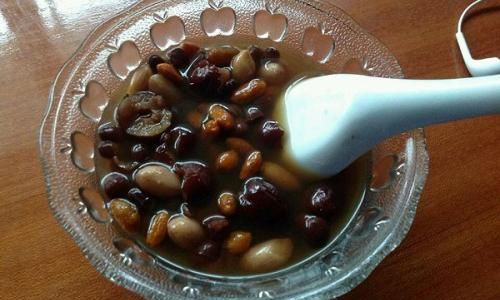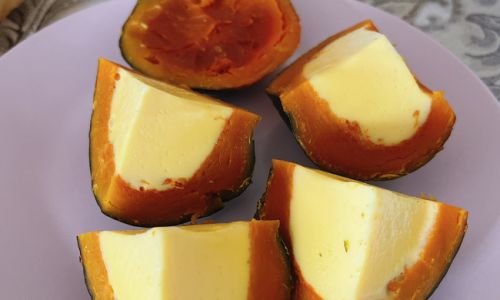Table of content
Blanched broccoli is a culinary staple that bridges simplicity and elegance. This cooking technique, which involves briefly boiling vegetables and then plunging them into ice water, preserves the vegetable’s vibrant color, crisp texture, and nutrients. While often overlooked in favor of more elaborate dishes, blanched broccoli shines as a versatile side dish, a crunchy addition to salads, or a nutrient-packed base for meals. This article will demystify the process of blanching broccoli, offering detailed instructions, tips for perfection, and creative ways to elevate this humble vegetable into a star ingredient.
Understanding Blanching: The Science Behind the Technique
Blanching is more than just boiling water—it’s a scientific process that halts enzyme activity in vegetables, preventing them from becoming overcooked, mushy, or discolored. When broccoli is exposed to high heat, its cell walls soften slightly, making it more tender while retaining its structural integrity. The subsequent ice bath, often called “shocking,” stops the cooking process immediately, locking in the bright green hue and preserving nutrients like vitamin C and folate.
Ingredients and Equipment You’ll Need
Before diving into the cooking process, gather the following:
- 1 large head of fresh broccoli: Look for firm, deep green florets with tight buds. Avoid broccoli with yellowing edges or limp stems.
- Salt: For seasoning the cooking water.
- Ice cubes: To create the ice bath.
- Neutral cooking oil (optional): Such as olive oil or avocado oil, for finishing.
- Lemon wedges (optional): For a citrusy kick.
- Large pot: At least 4-6 quarts in capacity to accommodate the broccoli and water.
- Colander or slotted spoon: For draining the broccoli.
- Bowl of ice water: Large enough to submerge the cooked broccoli.
Step-by-Step Guide to Blanching Broccoli
Preparing the Broccoli
- Wash thoroughly: Rinse the broccoli under cool running water to remove dirt or debris. Pay special attention to the crevices between the florets.
- Trim the stems: Using a sharp knife, cut off the tough end of the stem, leaving about 1-2 inches attached to the florets. The stem is edible and adds crunch, so avoid discarding it entirely.
- Separate into florets: Pull or cut the broccoli into bite-sized pieces. Aim for uniformity to ensure even cooking. If the stems are thick, slice them lengthwise into quarters.
Boiling the Water
- Fill the pot: Add enough water to cover the broccoli completely—typically 6-8 cups for a medium-sized head.
- Salt the water: Bring the water to a rolling boil over high heat, then add 1-2 tablespoons of salt. Salted water seasons the broccoli from the inside out and raises the water’s boiling point, ensuring faster cooking.
Blanching the Broccoli
- Add the broccoli: Carefully lower the florets into the boiling water using tongs or a slotted spoon. Stir gently to submerge all pieces.
- Set a timer: Cook for 2-3 minutes. The exact time depends on the size of the florets. Smaller pieces may cook in 90 seconds, while larger ones could take up to 4 minutes.
- Test for doneness: After 2 minutes, pierce a floret with a fork. It should offer slight resistance (like a cooked al dente pasta) but not be crunchy. Overcooking will result in a soggy texture and dull color.
Shocking in Ice Water
- Prepare the ice bath: Fill a large bowl with cold water and ice cubes while the broccoli cooks.
- Transfer immediately: As soon as the timer goes off, drain the broccoli in a colander and immediately plunge it into the ice bath.
- Chill completely: Let the broccoli sit in the ice water for 2-3 minutes, or until it feels cool to the touch. This step is crucial for preserving color and texture.
Draining and Patting Dry
- Remove excess water: Transfer the chilled broccoli back to the colander and shake gently to drain.
- Pat dry: Lay the broccoli on a clean kitchen towel or paper towels and pat lightly to remove moisture. Excess water can dilute flavors in subsequent dishes.
Enhancing Flavor: Seasonings and Finishes
Blanched broccoli is a blank canvas for seasonings. Here are some ways to elevate its taste:
- Olive oil and lemon: Drizzle with extra-virgin olive oil and a squeeze of lemon juice for a bright, refreshing finish.
- Garlic and herbs: Sauté minced garlic in butter, then toss with the broccoli. Add fresh herbs like parsley or basil.
- Parmesan cheese: Sprinkle grated Parmesan over warm broccoli for a salty, umami-rich twist.
- Spicy kick: Toss with red pepper flakes, a dash of soy sauce, or a drizzle of chili oil.
Health Benefits of Blanched Broccoli
Broccoli is a nutritional powerhouse, and blanching helps retain its health benefits:

- Rich in vitamins: A single cup provides over 100% of your daily vitamin C and significant amounts of vitamin K.
- Fiber-packed: Promotes digestion and keeps you full longer.
- Antioxidants: Contains sulforaphane, a compound linked to reduced inflammation and cancer prevention.
Creative Ways to Use Blanched Broccoli
Beyond serving it as a simple side dish, blanched broccoli can transform everyday meals:
- Salads: Toss with cherry tomatoes, red onions, and feta cheese for a Mediterranean-inspired salad.
- Stir-fries: Add blanched broccoli to stir-fries during the last minute of cooking to retain its crunch.
- Pasta: Mix with whole-grain pasta, pesto, and cherry tomatoes for a quick weeknight dinner.
- Soups: Puree blanched broccoli into creamy soups or add it to minestrone for texture.
Common Mistakes to Avoid
- Overcrowding the pot: Cooking too much broccoli at once lowers the water temperature, leading to uneven cooking.
- Skipping the ice bath: Without shocking, the broccoli continues to cook, resulting in a mushy texture.
- Under-salting the water: Unsalted water produces bland-tasting broccoli.
- Using old broccoli: Wilted or yellowing broccoli won’t retain its vibrancy, even after blanching.
Storing and Reheating Blanched Broccoli
- Refrigerator: Store in an airtight container for up to 5 days.
- Freezer: Blanch for an extra minute, then freeze on a baking sheet before transferring to a freezer bag. Use within 8-10 months.
- Reheating: Sauté in a pan with oil over medium heat, or reheat gently in the microwave.
Variations on Blanching
- Steaming: For a gentler cooking method, steam broccoli in a basket over boiling water for 4-5 minutes, then shock in ice water.
- Roasting: After blanching, roast broccoli at 425°F (220°C) for 15-20 minutes for caramelized edges.
- Grilling: Toss blanched broccoli with oil and grill for 2-3 minutes per side for smoky flavor.
The Cultural Significance of Broccoli
Broccoli, a member of the Brassica oleracea family, has been cultivated for over 2,000 years. Ancient Romans prized it for its medicinal properties, while Italian immigrants introduced it to the United States in the 19th century. Today, it’s a global favorite, starring in dishes from stir-fries to casseroles. Blanching, with its roots in professional kitchens, has become a home cook’s secret weapon for preserving flavor and texture.
Conclusion: Elevate Your Plate with Blanched Broccoli
Blanched broccoli is a testament to the beauty of simplicity. With minimal effort, you can transform a humble vegetable into a dish that’s both visually stunning and nutritious. Whether served as a side, tossed into salads, or blended into soups, mastering the art of blanching opens doors to endless culinary possibilities. So next time you’re at the grocery store, grab a head of broccoli—your taste buds (and your body) will thank you.

By following this guide, you’ll not only perfect the technique but also gain a deeper appreciation for the humble broccoli. Happy cooking!




0 comments